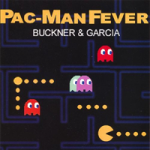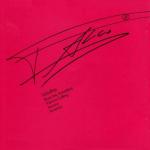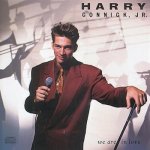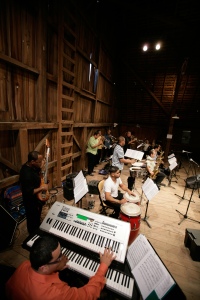In no particular order:
The Kenny Barron Trio, Village Vanguard NYC March 2005
 Though I’d dabbled in jazz for a while, I was a very casual listener until my evening at the Vanguard. My jazz exposure was limited a couple major discs by Miles Davis and John Coltrane and a few random things I’d picked up from friends.
Though I’d dabbled in jazz for a while, I was a very casual listener until my evening at the Vanguard. My jazz exposure was limited a couple major discs by Miles Davis and John Coltrane and a few random things I’d picked up from friends.
After a trip on the 1 Train down to the West Village, I found myself in the presence of an art form that I’ve grown to love: the jazz piano trio. Kenny Barron’s smart playing–neither too spare nor too showy in ornament and improvisation–was certainly the highlight of the experience, but I found myself appreciating the truly collaborative effort of playing in a jazz combo. I was too new to the scene to remember what they played, but the evening was an important one, opening my awareness to great jazz pianists like McCoy Tyner, Cedar Walton, Thelonious Monk, Bill Evans, Ahmad Jamal, Phineas Newborn, Jr., …and all of their collaborators.
Sweeney Todd, Eugene O’Neill Theater NYC March 2005
John Doyle’s actor-musician production of Sweeney Todd brought the act and art of storytelling to the fore and managed to make Patti LuPone back into an ensemble member. People unfamilar with score and story claim the plot and characterization may have been muddled in the process of the stripping the revenge tale to its core, but I didn’t find this to be the case. In fact, the doubling of character and instrument actually enriched the experience for me. I’d never had much interest in the young love/Anthony and Johanna story before, but the sonic and physical gravity lent by their twin cellos strengthened their presence. (It also helped that Doyle stifled any audience response through applause until after the first rendering of “Johanna”). There was so much to appreciate in this production–between the strength of the score and story themselves, the performances, and the “work” of the show being produced right in front of you–that I actually saw this twice.
Twelfth Night, The New Globe Bankside London July 2002
While I enjoyed all aspects of this original practices production at the Globe (meaning all casting, costuming, and music/effects choices must adhere to the practices of the Elizabethan theater), the experience was definitely made by Mark Rylance as Olivia. Though there is much to call artificial about his performance, the rendering of Olivia’s sorrow that eventually turns to comic love was completely effective. I remember his movements around the stage seeming as if the character were floating around instead of walking. The cast erupting into a ridiculously festive dance after the performance added to the atmospheric perfection of the experience. Being footsteps from the Thames in an open-air reconstruction of the Globe didn’t hurt, either.
 The first five notes of Bill Evans’s take on the Gershwin/ Heyward folk opera aria “I Loves You Porgy” are an intoxicating, atmospheric invitation to one of the most beautiful collaborations by a jazz trio, rivaled (in my mind) only by that same trio’s rendition of another tune from Porgy and Bess, “My Man’s Gone Now.”
The first five notes of Bill Evans’s take on the Gershwin/ Heyward folk opera aria “I Loves You Porgy” are an intoxicating, atmospheric invitation to one of the most beautiful collaborations by a jazz trio, rivaled (in my mind) only by that same trio’s rendition of another tune from Porgy and Bess, “My Man’s Gone Now.” I don’t remember the presence of too many records in our house growing up, but I can vividly recall this album’s iconic cover and the giddy feelings conjured by hearing the sounds associated with Aladdin’s Castle in the Carbondale mall coming out of our huge record player/stereo console.
I don’t remember the presence of too many records in our house growing up, but I can vividly recall this album’s iconic cover and the giddy feelings conjured by hearing the sounds associated with Aladdin’s Castle in the Carbondale mall coming out of our huge record player/stereo console. Regarded by some as the “the single worst pop song recorded in the entire decade of the 1980s,” I must have liked something about this mess of a synth-pop-chant tribute to Wolfgang.
Regarded by some as the “the single worst pop song recorded in the entire decade of the 1980s,” I must have liked something about this mess of a synth-pop-chant tribute to Wolfgang. While others were in the throes of adolescent angst and smelling teen spirit, I was happily swingin’ to the big band sounds of Harry Connick, Jr. Sarah introduced me to this disc, and I eventually came to appreciate Harry as a piano player more than a singer. He doesn’t play much on this album, and the tracks alternate “happy”/”sad” a bit too drastically and predictably, but I can trace my interest in jazz piano to recordings such as this one from high school.
While others were in the throes of adolescent angst and smelling teen spirit, I was happily swingin’ to the big band sounds of Harry Connick, Jr. Sarah introduced me to this disc, and I eventually came to appreciate Harry as a piano player more than a singer. He doesn’t play much on this album, and the tracks alternate “happy”/”sad” a bit too drastically and predictably, but I can trace my interest in jazz piano to recordings such as this one from high school. 
